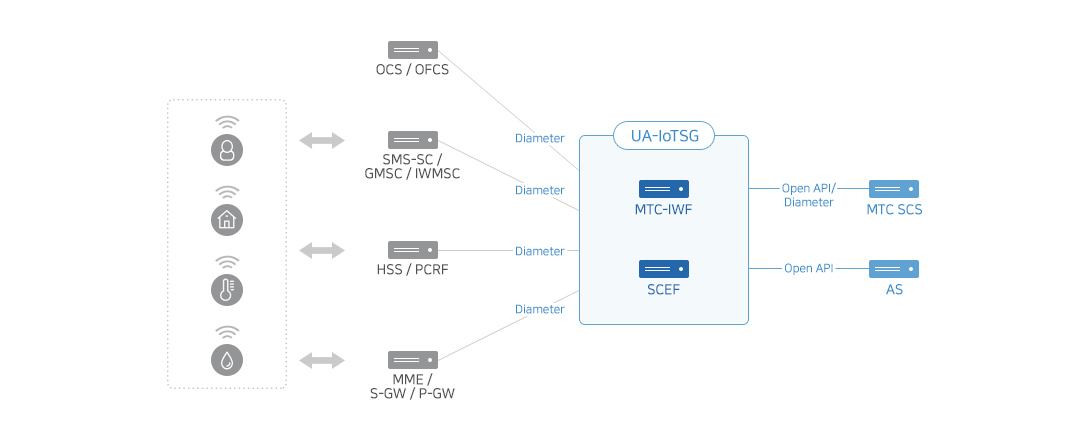
UA-IoTSG
(UANGEL-IoT Service Gateway)
Communication service providers all over the world is conducting various activities to pre-occupy the IoT market, based on their wireless communication infrastructure. As a part of those activities, they’re developing IoT business by developing a proprietary IoT platform or interfacing the third party IoT platform or application. UA-IoTSG (IoT Service Gateway) is a solution that combines the MTC-IWF (Machine Type Communication-InterWorking Function), which relays the interface between the external IoT service server and mobile communication networks, and the SCEF (Service Capability Exposure Function) that provides the core mobile communication network function to external service providers as an open API or manages small capacity data communication with the IoT terminal, which doesn’t support the IP stack. UA-IoTSG is a key network equipment to use communication for the IoT service.
System
| IoTSG (IoT Service Gateway) |
MTC-IWF (Machine Type Communication-InterWorking Function) |
|
|---|---|---|
| SCEF (Service Capability Exposure Function) |
|
Key features
- Complying with the latest 3GPP/ETSI/TTA specifications.
- Preventing the direct interface between external equipment (AS, MTC SCS, etc.) and core mobile network (network topology hiding).
- Enabling external service providers to obtain a new sales opportunity and promote the service ecosystem by providing the service capability information of the communication service provider using the open API.
- Enabling quick service introduction by interfacing the 3rd party IoT platform without changing the core network system.
- Accommodating more diverse IoT terminals by supporting non-IP terminals, and direct, low power and small capacity data communication in the CIoT service.
- Ensuring strong network interface compatibility by adopting the internally-developed protocol stack.
Major references

|
|
|---|



